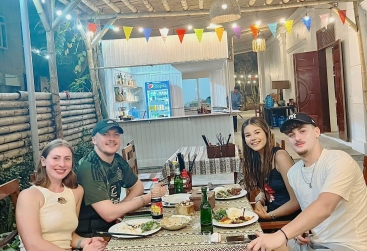For countless generations, the conical hat has become an integral part of Vietnamese culture. Not only does it serve as a cover from the sun and rain, but it also carries a unique cultural feature that has been immortalized in many Vietnamese poems and songs. The conical hat is a symbol of grace, simplicity, and friendliness of Vietnamese women that has been cherished for thousands of years.
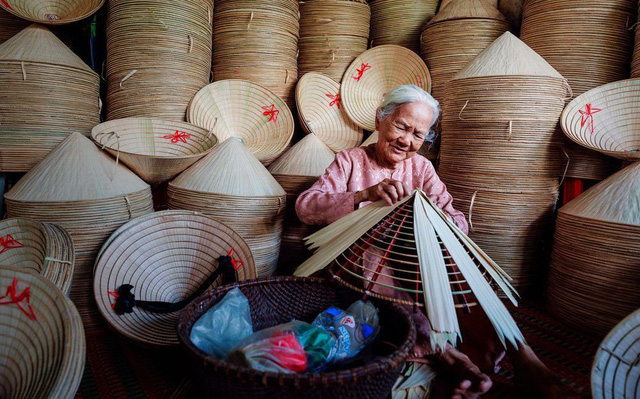
In Vietnam, conical hat-making is a common profession found in almost every locality. The primary purpose of hats is to protect the head from sun and rain, but each region has its unique characteristics. The craft of making conical hats in Ba Don has been around for hundreds of years, with many traditional hat villages such as Ha Thon, Quang Thuan, Quang Hai, Quang Loc, and others.
Join Phongnha Discovery to learn about the traditional hat-making village in Ba Don through this article!
History of Ba Don conical hat craft village
The craft of making conical hats has been a source of livelihood for the people of Ba Don for almost 200 years. Despite the challenges of history, it has become a traditional profession that has been passed down from generation to generation.
Today, it is a common sight to see families and individuals engaging in the craft of hat-making in Ba Don. Almost everyone in the area, regardless of age or gender, knows how to make hats. While it is a challenging and time-consuming task, it is the main source of income for many. Each person can earn between 50,000 to 200,000 VND per day from making hats.
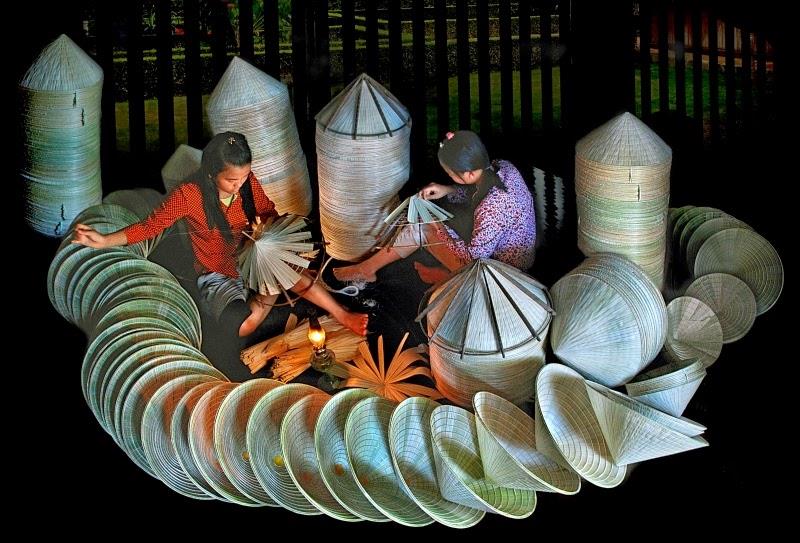
There are two types of Ba Don conical hats: green conical hats and coconut conical hats. Green conical hats are based on the pattern of Hue poem conical hats. To make this type of conical hat, the hat maker will arrange three layers of leaves on 16 brims and then attach the hat. The second type is a coconut leaf cone. The process of making this product is similar, but the difference is that the worker will arrange a layer of cone leaves inside and a layer of coconut leaves on the outside.
Ba Don conical hat-making process
Choose ingredients to make leaves
To create a stunning conical hat, it is essential to select the starting materials with great care. This is because only high-quality materials with a smooth texture can produce a beautiful hat that meets the required standards. Moreover, the finesse of the needle and thread also plays a significant role in enhancing the hat's beauty.
Usually, when making conical hats, people use two main types of leaves: coconut leaves and palm leaves:
- Coconut leaves: If you want coconut leaves to look beautiful, you should buy them from the South. The leaves that are shipped are usually rough, so workers need to handle them carefully before making hats. This involves processing them with sulfur, which gives the leaves their durability and beautiful color over time.
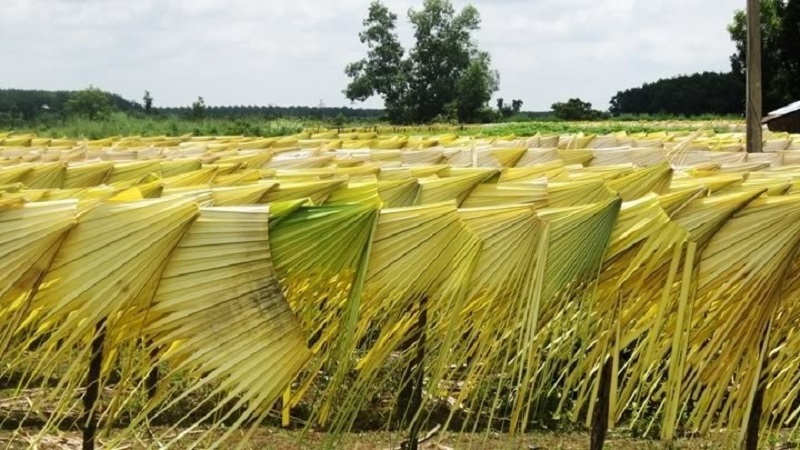
- Palm leaves: To make a good quality conical hat, it is important to choose young palm leaves that are of medium size. These leaves should have green veins and greenish white color. Once selected, the leaves need to be dried and then treated using the correct process to ensure they meet the standards. After drying, it is recommended to leave them in the dew for about 2 to 4 hours to make them less hard and brittle. Then, each leaf should be ironed over a moderately hot charcoal stove using a bunch of cloth until it is fully exposed.Proceed to make conical hats.
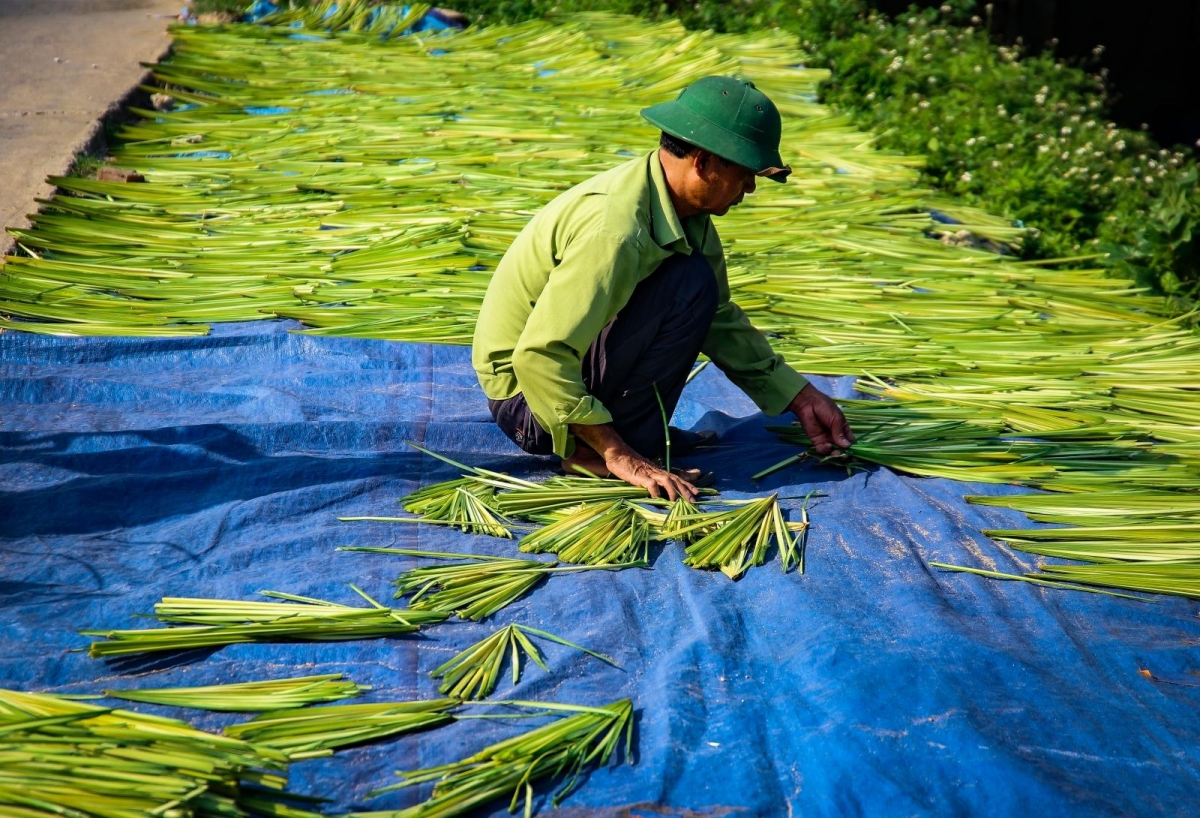
Proceed to make conical hat
The hat maker will now use an iron rod as a frame and sharpen each bamboo slat to create an evenly round shape with a small diameter. This requires careful attention to detail to ensure that all slats are of equal size. Next, the bamboo slats are bent into small and shiny circles, ranging in size from large to small. Each hat requires around 16 bamboo slats that are arranged in a pyramid-shaped frame. Once the frame is ready, the leaves are arranged on top. It is important to arrange the leaves evenly so that the blade overlaps without pushing or skewing each other.
Weaving leaves outside the frame: Take each treated leaf and weave it around the frame of the hat with string or rubber leaves. Cut the details evenly: Use scissors to cut the details above the frame evenly, you can create a wavy cut to make the hat more beautiful.
Finishing: Cut arbitrary fabric tape to decorate the hat. Line the top of the hat to keep it looking cleaner. Finally, decorate the hat with a few bows or other accessories to make it more complete.
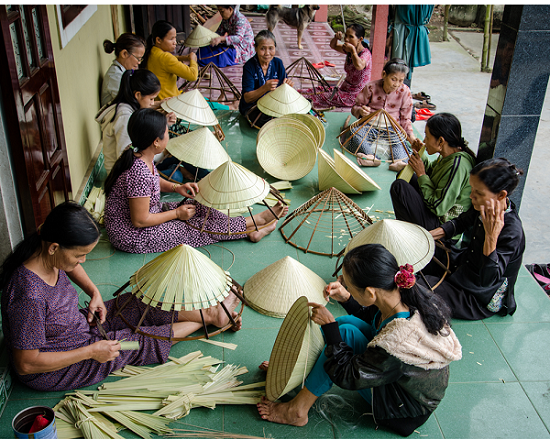
The daily task of crafting traditional hats not only helps increase the income of the people here but also serves as an opportunity to bring the villagers together. Each person has a specific step in the process, and chatting about everyday stories while creating a complete hat is the beauty of the craft villages' labor.
The Ba Don conical hat craft villages are not just places that produce long-standing, characteristic traditional handicraft products. They also serve as a hub for preserving the quintessence of folk art, production experience, and customs and practices of the community. Due to this unique feature, the craft village has become an attractive destination for domestic and international tourists in recent years.
>>>Discover more about Quang Binh here
Today, the Ba Don traditional conical hat - making not only serves as a commodity but also as a tourism product. The Ba Don hat village has become a popular tourist destination for both locals and foreigners. Visitors can explore the craft village, discover the intricacies of the conical hat - making process, and purchase exquisite conical hats as souvenirs to take home.











